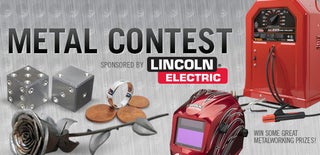Introduction: Bamboo Torch
Hello everybody,
.
I had a piece of bamboo that my wife and I cut down in 2012 Mito, Japan while volunteering at a bamboo grove through wwoof. We have kept it as a souvenir all this time in the corner somewhere.
.
Just looking at it the other day I had a crazy idea, I decided to make a torch out of it.!
.
REMEMBER to never look directly into the LEDs. And you can, with the right adjustments, use your bamboo torch as a light therapy source.
Step 1: Parts / Tools
Electronics
1W 660nm LED (ebay - $4.99 for 10)
1W cool white LED (ebay - $2.95 for 10)
1W warm white LED (ebay - $2.95 for 10)
9V battery clip (ebay - $1.99 for 2)
switch (ebay - $2.58 for 20)
9V battery (please always use rechargeable batteries)
.
Materials & Tools
bamboo piece, closed on one side and open the other like a cup
a tin cap, i found an old tea container that fits perfectly !
3 copper coins, i used US pennies
piece of cardboard and toothpick to mix epoxy on
metal epoxy
drill & large drill bit (or dremel tool)
cable, 22" gauge and flexible kind
duct seal (optional)
glue gun, soldering iron/solder, pliers, knife, small screwdriver, scissors, electrical tape
Step 2: Bamboo
It's really not that hard to locate bamboo, and also very fast and easy to grow. incredible, limitless uses. extremely strong yet easy enough to cut down with a pocket knife. Growing over 4 story apartment buildings, i have seen amazing things in Japan and how effectively they use this grass like wooden structure. Gigantic indestructible straws basically, light as a feather and very easy to work with.
.
Make sure to cut below and above the joint points so that you have an empty cup sort of a bamboo piece..The battery will be hiding inside.
.
Once you have a cut piece of bamboo, drill a hole for the switch. Don't fix the switch yet. we'll come back to that..
Step 3: 1US Penny Heatsink (copper)
According to wikipedia, there are some advantages of copper over aluminium heatsinks;
" Copper has around twice the thermal conductivity of aluminium and faster, more efficient heat absorption. Its main applications are in industrial facilities, power plants, solar thermal water systems. Copper is three times as dense and more expensive than aluminium..."
.
Also according to wikipedia, the US penny was made of;
- during year 1965; (95% copper, 5% zinc) - 3.11 or 2.5gr. mass
- during years 1981 & 1985 (my dob); 97.5% zinc, 2.5% copper (core: 99.2% zinc, 0.8% copper; plating: pure copper) - 2.5gr. mass ... not much copper in these years, but appareantly zinc has excellent thermal capacity as well..!
* these years belong to the 3 pennies I have used.
.
Carefully bend the legs of the leds up as shown in the 2nd picture and epoxy them to the pennies.
.
Now epoxy your penny leds to the tin can in series direction. Wait at least 15 minutes to cure.
Step 4: Electrical
Warning! if you have no previous electrical experience please first read 'basic electronics' & 'LEDs for beginners' - also remember to ask me any question you may have.
.
Make a hole for the wires and feed the flexible type cable through.
.
Solder all the lights in series.
.
Connect the battery clip's negative leg straight to the negative on the cap
.
The switch goes in between the positive line. Solder the battery clip to the middle of the switch legs. Now decide which way you want it to turn on/off and solder accordingly. I made mine turn on by pushing the button up and off by pulling it down.
.
Seal everything with electrical tape and check your work. Lights come on (watch the last picture of this step!).
Step 5: Switch
Apply hot glue behind the switch to seal the connections.
.
Now feed the wires back inside and seal around the switch while applying pressure, holding it level. fill in the holes and cracks around it. Don't lift your finger before it cools down.
.
If done right it will be very stable. Hold on, we are almost finished..
Step 6: Safety
I came across this incredible product at the hardware store the other day. It is duct seal, designed to fill in cracks in ac units and ventilation systems. BUT it is non-conductive !!!
.
It is exactly like playdough and it also doesn't freeze or cure. You can always remove it and recycle/reuse. It is way better than hot glue in my opinion in most cases. Give it a try, it's pretty cool...
.
Now all the connections are sealed and safe to use. Let's see it in action!
Step 7: Conclusion
Very bright light source. Creating amazing color patterns. It is not a directional beam instead it offers a very wide circle of light. With just 3Watts of power and 150-180 lumens offering a 120 degree beam angle.
.
It feels more like a torch instead of a flash light. Bamboo feels very natural and warm in your hands. Great for camping or in the tent i assume. Or by your bed to use it as a night light. It can also be used as an emergency SOS messenger.
.
And if it breaks just harvest the parts for another project and you can throw the bamboo away. It will become food for the soil very fast, biodegradable electronics someone said?
.
.
love & peace
akin,

Participated in the
Battery Powered Contest

Participated in the
Glue Contest

Participated in the
Metal Contest













